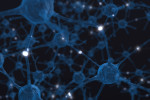
Brain chemical gives new clues in treating chronic pain
 A chemical in the brain usually associated with movement, reward-motivation behaviour and cognition may also play a role in promoting chronic pain, according to experts from The University of Texas in Dallas.
A chemical in the brain usually associated with movement, reward-motivation behaviour and cognition may also play a role in promoting chronic pain, according to experts from The University of Texas in Dallas.
A research group followed the sequence of pain impulses travelling from the brain to the spinal cord in mice. They found that by removing a collection of neurons (called A11) that contain dopamine, chronic pain was diminished.
“These findings demonstrate a novel role for how dopamine contributes to maintaining chronic pain states,” explains Dr Ted Price who is involved in the research. “This may open up new opportunities to target medicines that could reverse chronic pain.”
We know that pain signals travel like electricity from an injury to the spinal cord where they pass pain signals to other cells. Those pain signals then travel upward and relay the information to neurons in the brain. There is no one pain centre in the brain, but experts believe that chronic pain may change how these pain centres are activated.
In people with chronic pain, neurons continue to send pain signals to the brain, even in the absence of injury. We don’t yet know why but it could be because of the A11 neurons. The current research found that these neurons didn’t affect acute pain, but they did have a profound effect on chronic pain. By targeting these neurons in mice with chronic pain, the researchers permanently reversed a chronic pain state.
“In future studies, we would like to gain a better understanding of how stress interacts with A11,” Dr Price says. “And we’d like to know more about the interaction between molecular mechanisms that promote chronic pain and dopamine.”
Subscribe to Arthritis Digest, the UK’s fastest growing arthritis magazine for all the latest arthritis news, reviews and celebrity interviews. You’ll know what your doctor is talking about, what new drugs are in the pipeline and be up to date on helpful products. Hard copy and digital versions both available. Click here for more information.
Image credit: Birth Into Being
